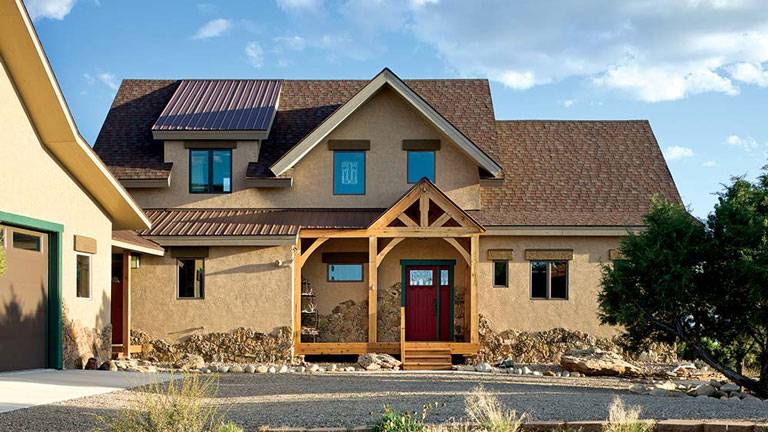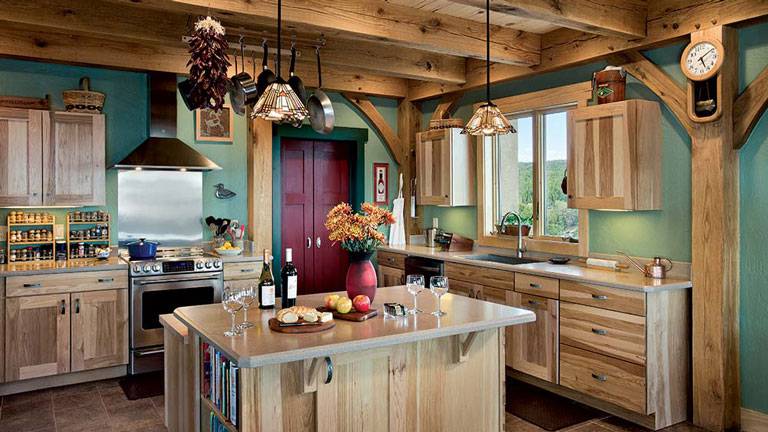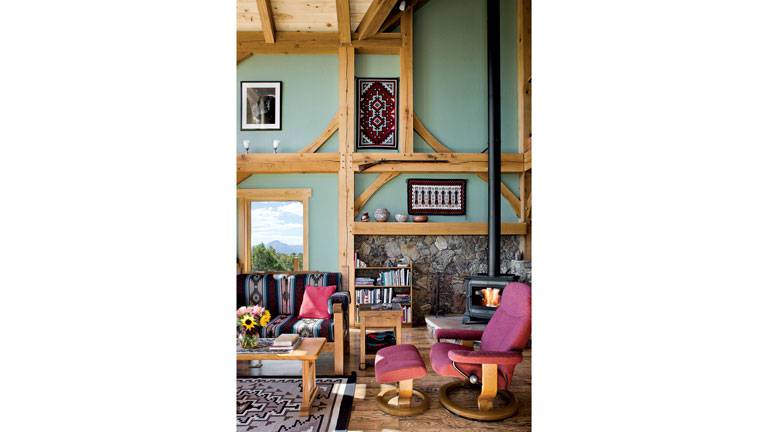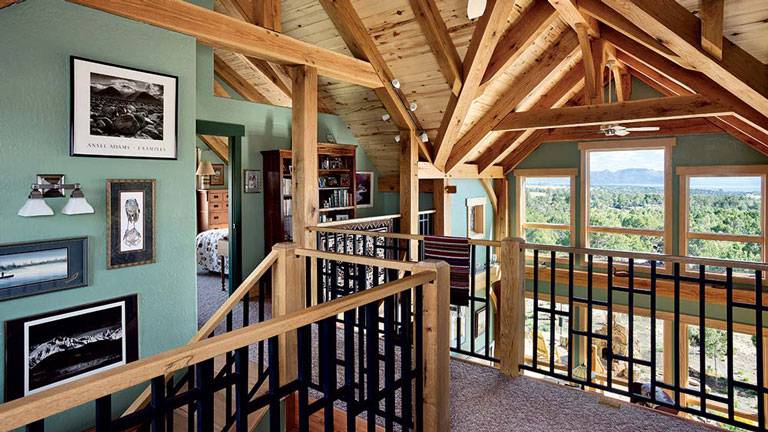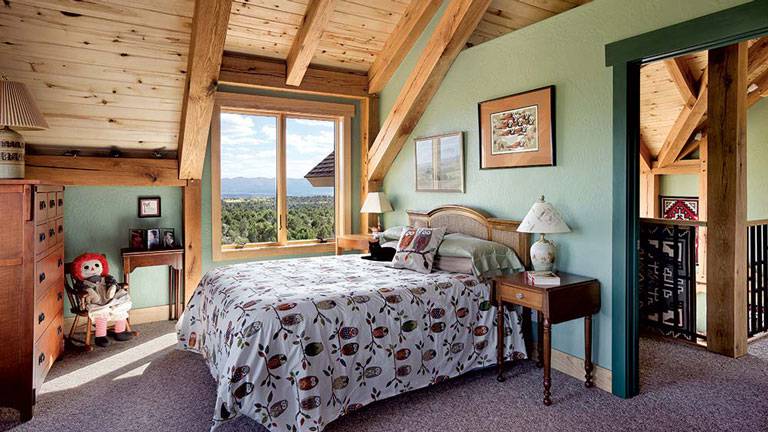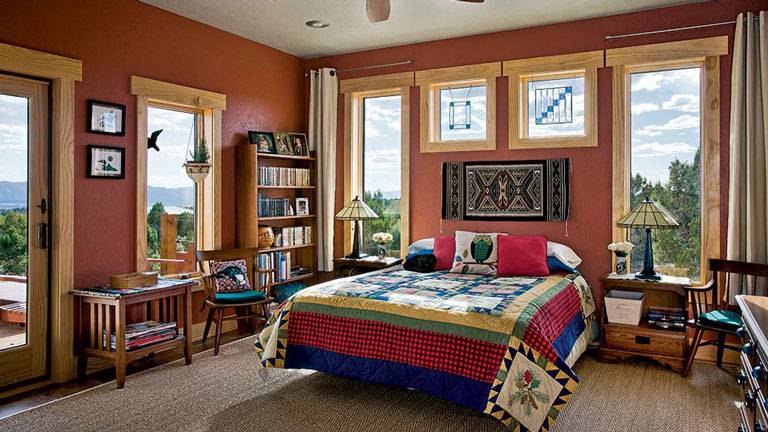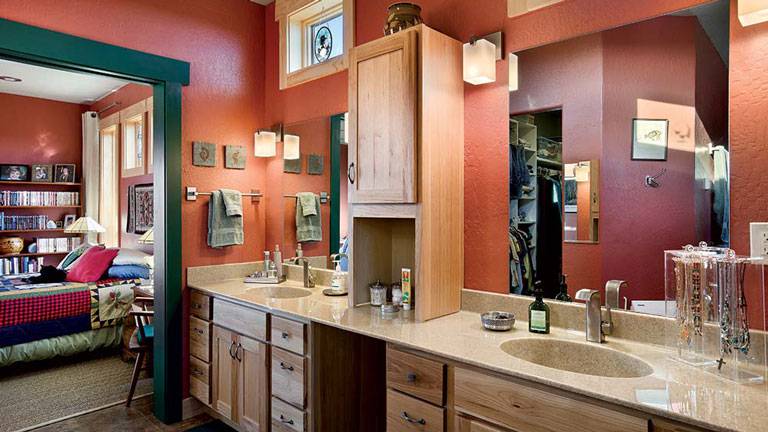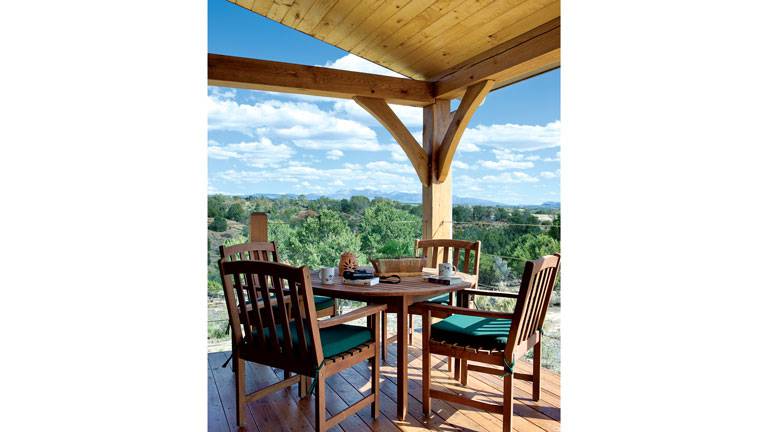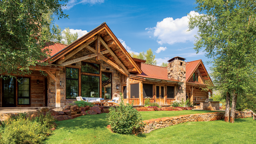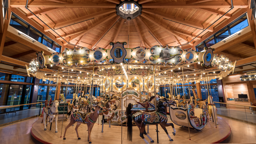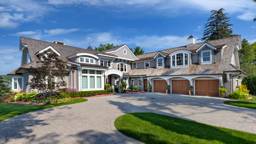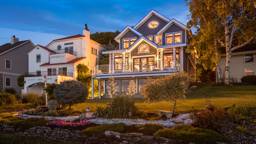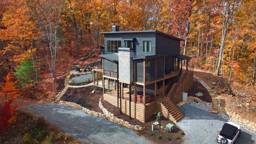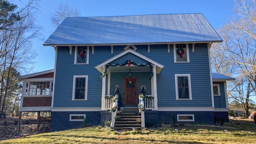Colorado Craftsman: A Timber Home With Classic Style
One couple builds a timber home with a nod to classic American style.
Sliding patio doors and cable rails on the redwood deck allow the homeowners to take in the views of Mesa Verde National Park and Las Platas from inside and outside the house. A catwalk wraps around the exterior and includes a hot tub off the master bedroom.
Written by
Stacey Freed
Photography by
Roger Wade
If there’s one thing that timber-home enthusiasts have in common, it’s their dedication to the “dream home” ideal. And with that dedication typically comes months — if not years — of planning their house, right down to the smallest detail. For the owners of this high-desert Colorado home, that tried-and-true process definitely proved fruitful.
Over three years, the homeowners did a lot of studying and looked at probably 500 house plans. They also took the time to read The Arts and Crafts Cabin, a book by Robbin Obomsawin that celebrates the Arts & Crafts’ aesthetic and its focus on handcrafted design and nature’s inspiration in architecture. “We found four or five homes in that book that we really liked,” says the homeowner. “And it turned out that all but one was done by Wind River Timberframes in Dolores, Colorado.”
To come up with their floor plan, they placed a call to Alan Bernholtz at Wind River, and began to combine the best ideas from all the plans they looked at. It was the interplay of the couples’ wants and needs — in particular their desire for a “small and personal” floor plan that maximized the scenery — with architect Tyler Lapp’s and Bernholtz’s vision that gives this home “the sense of peace and comfort” that Craftsman proponent Gustav Stickley wrote about.
Surrounded by pinyon and juniper, mesas and mountains, the house was intentionally built with minimal impact on its nearly 15-acre site, 7,200 feet up a mountain. It overlooks a canyon and has 270 degree views of Las Platas and Mesa Verde National Park. Bernholtz says it was a challenge to not unduly impact the land, but his crew was able to use a nearby gravel road as a staging area. The homeowners, who moved here from the Deep South (where they were “sick of tornadoes and hurricanes”), chose the site not only for its “incredible views” but also because as scientists — he’s a wildlife biologist and she’s a geologist — they volunteer at nearby archaeological sites. “It’s an opportunity to apply what we know and to give back,” the geologist says.
Wind River did “all the joinery and planing and made mortise and tenon and angle cuts at its shop, before unloading and assembled the pieces on site. It took three and a half days to raise the frame, which the homeowners watched in fascination. “Just seeing how the crane worked and the pieces flew — we loved it,” says one homeowner. “It was really art — three-dimensional, like performance art.”
The 2,400-square-foot home lives large with an open floor plan on the main level, where the master bedroom is also located. “The kitchen came out bigger than we imagined and we love the way it’s all a giant open space,” the homeowner says. Upstairs is a guest bedroom and an L-shaped loft area used as a library. “It doesn’t look like living space, but it’s important to us,” says the homeowner.
Bernholtz calls the design a “classic timber frame,” with a “gabled extension for the great room and shed porches off of that. There are nice features in the valleys in the home and in the details in how the great room ties in with the rest of the house.” Except for the master bedroom, which is built with SIPs and conventional framing, the house is structural timber frame.
The design maximizes passive solar. “We have the perfect combination of sun angle, the height of the windows and the depth of the roof overhang so the house is full of sun in the coldest part of the winter and the sun doesn’t invade in the summer,” the homeowner says. With radiant heat in the floor and good insulation, the house stays warm in winter. In summer, the couple open windows at night, close them in the morning and the house retains its temperature.
“We don’t need air conditioning,” they say. Evidence of Craftsman style appears naturally in the interior design where structural oak timbers do double duty as frames to highlight photographs, artwork, artifacts, and, of course, the landscape. Frame patterns on the walls are mimicked by the loft stair rail. As Stickley wrote, “There are elements of intrinsic beauty in the simplification of a house built on the log cabin idea.” While this house is not a cabin, its simple lines and low impact give it that “intrinsic beauty” and make it fit neatly into what the homeowner calls a “clean, quiet environment.”





